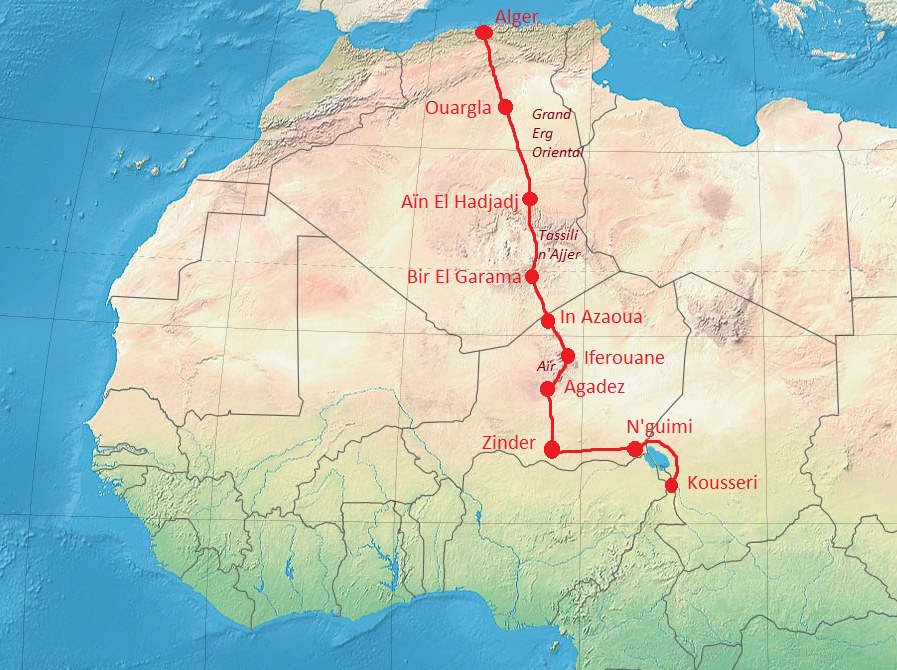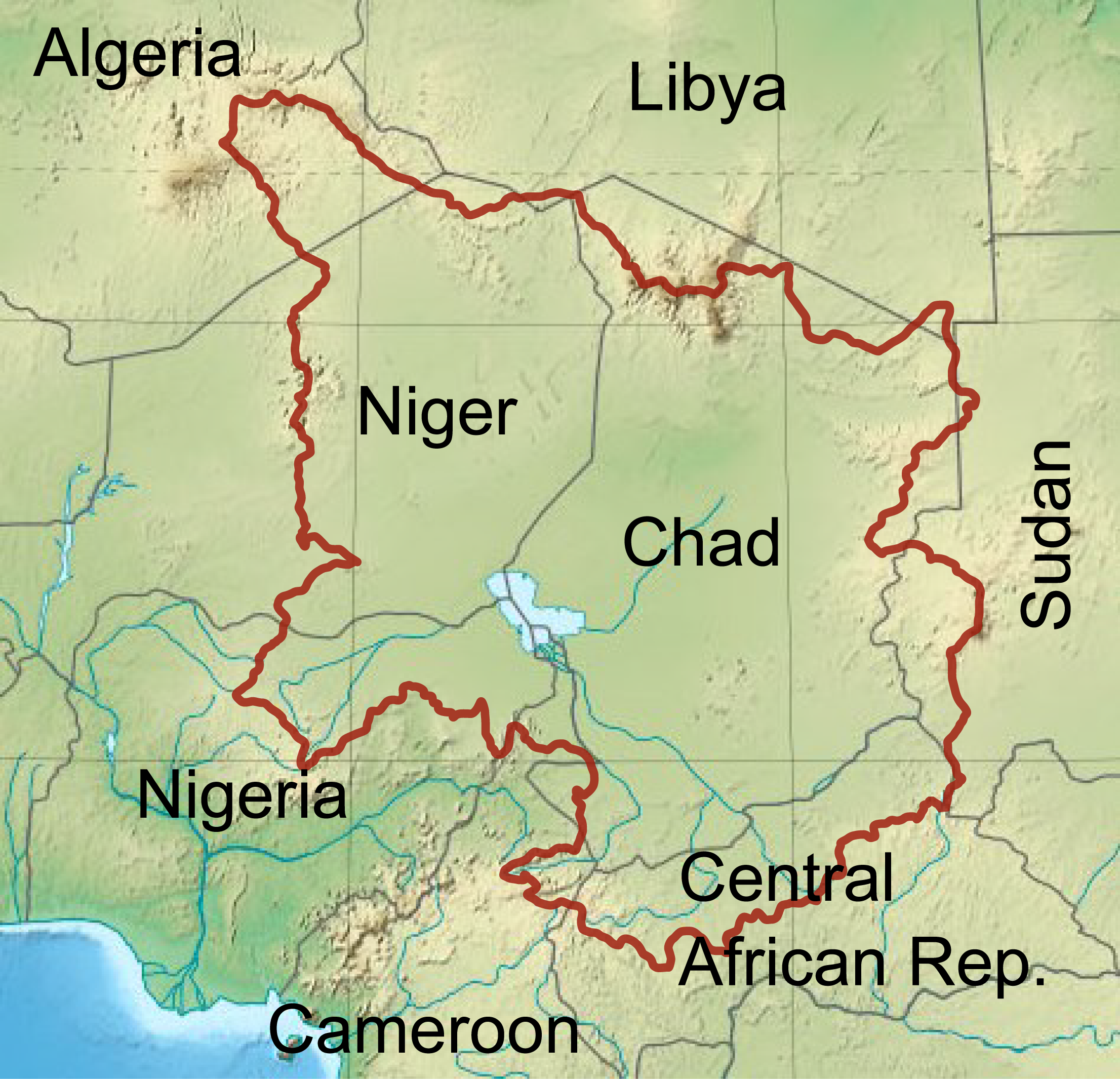|
Émile Gentil
Émile Gentil (; 4 April 1866 – 30 March 1914) was a French colonial administrator, naval officer, and military leader. Born at Volmunster in the department of Moselle, he later attended the École Navale, the school that formed French naval officers. As an ensign, he was assigned to conduct hydrographic soundings along the Gabonese coast from 1890 to 1892. That year, he joined the colonial administration in Gabon. Missions to the African Interior Gentil is best known for heading two military missions to conquer and consolidate territories north from modern Gabon to Chad. First Mission 1895–1897 In 1895, Gentil was ordered to find a practical route to Chad, claiming the area between for France, and hence thwarting German and British expansion. On 27 July 1895, Gentil headed up the Congo River on the French steamship ''Léon-Blot''. The ship was then dismantled and hauled by African laborers through the forest to reach navigable portions of the Oubangui, where he fo ... [...More Info...] [...Related Items...] OR: [Wikipedia] [Google] [Baidu] |
Chari-Baguirmi Region
Chari-Baguirmi ( ar, شاري باقرمي) is one of the 23 regions of Chad. Its capital is Massenya. It is composed of part of the former Chari-Baguirmi Prefecture ( sub-prefectures of Massenya and Bousso) and parts of the sub-prefecture of N'Djamena). History The region was the historic heartland of the Sultanate of Bagirmi, which ruled much of the area from its capital in Massenya from the late 15th - late 19th centuries. Geography The region borders Hadjer-Lamis Region to the north, Guéra Region to the east, Moyen-Chari Region to the southeast, Tandjilé Region to the south, and Mayo-Kebbi Est Region, N'Djamena and Cameroon to the west. The Chari River flows through the west and south of the region. Settlements Massenya is the regional capital; other major settlements include Bä Illi, Bogomoro, Bousso, Dourbali, Koundoul, La Loumia, Linia, Maï Aïche, Mandélia and Mogo. Demographics As per the census of 2009 the population in the region was 621,785, with 50. ... [...More Info...] [...Related Items...] OR: [Wikipedia] [Google] [Baidu] |
N'Djamena
N'Djamena ( ) is the capital and largest city of Chad. It is also a special statute region, divided into 10 districts or ''arrondissements''. The city serves as the centre of economic activity in Chad. Meat, fish and cotton processing are the chief industries, and it is a regional market for livestock, salt, dates, and grains. It is a port city located at the confluence of the Logone River with the Chari River, forming a transborder agglomeration with the city of Kousséri (in Cameroon), capital of the Department of Logone-et-Chari, which is on the west bank of both rivers. It had 1,093,492 inhabitants in 2013. History N'Djamena was founded as Fort-Lamy by French commander Émile Gentil on 29 May 1900, and named after Amédée-François Lamy, an army officer who had been killed in the Battle of Kousséri about a month earlier. It was a major trading city and became the capital of the region and nation. During the Second World War, the French relied upon the city's ... [...More Info...] [...Related Items...] OR: [Wikipedia] [Google] [Baidu] |
Fort-Lamy
N'Djamena ( ) is the capital and largest city of Chad. It is also a special statute region, divided into 10 districts or ''arrondissements''. The city serves as the centre of economic activity in Chad. Meat, fish and cotton processing are the chief industries, and it is a regional market for livestock, salt, dates, and grains. It is a port city located at the confluence of the Logone River with the Chari River, forming a transborder agglomeration with the city of Kousséri (in Cameroon), capital of the Department of Logone-et-Chari, which is on the west bank of both rivers. It had 1,093,492 inhabitants in 2013. History N'Djamena was founded as Fort-Lamy by French commander Émile Gentil on 29 May 1900, and named after Amédée-François Lamy, an army officer who had been killed in the Battle of Kousséri about a month earlier. It was a major trading city and became the capital of the region and nation. During the Second World War, the French relied upon the ci ... [...More Info...] [...Related Items...] OR: [Wikipedia] [Google] [Baidu] |
Delimitation
Boundary delimitation (or simply delimitation) is the drawing of boundaries, particularly of electoral precincts, states, counties or other municipalities.Overview of Boundary Delimitation ACE: The Electoral Knowledge Center. Accessed July 09, 2008. In the context of elections, it can be called redistribution and is used to prevent unbalance of population across districts. In the , it is called . Unbalanced or discrimin ... [...More Info...] [...Related Items...] OR: [Wikipedia] [Google] [Baidu] |
Battle Of Kousséri
The battle of Kousséri originated in French plans to occupy the Chari-Baguirmi region. In 1899–1900, the French organized three armed columns, one proceeding north from Congo, one east from Niger and another south from Algeria. The objective was to link all French possessions in Western Africa, and this was achieved April 21, 1900 on the right bank of the Chari in what is now Chad opposite Kousséri, in what today is northern Cameroon. Prelude In 1899, Sudanese warlord Rabih az-Zubayr could field some 10,000 infantry and cavalry, all provided with rifles (except for 400 rifles, these were mostly obsolete), plus a great number of auxiliary troops equipped with lances or bows. His forces held fortified garrisons at Baggara and Karnak Logone. In 1899, Rabih received in Dikoa the French representative Ferdinand de Béhagle. The talks between them degenerated, and Béhagle was arrested. On July 17, 1899, Lieutenant Bretonnet, whose force was then sent by France agains ... [...More Info...] [...Related Items...] OR: [Wikipedia] [Google] [Baidu] |
Battle Of Kouno
The battle of Kouno was an inconclusive battle that took place between French troops and the Muslim army led by Rabih az-Zubayr, in the context of French colonial expansion in Africa, and more precisely in Chad. On August 16, 1899 the leader of the Gentil Mission, the Captain Émile Gentil, was informed of the utter annihilation by the warlord Rabih az-Zubayr of the Bretonnet-Braun Mission at Togbao on July 17. Gentil knew that the Forreau-Lamy and Voulet missions were marching on southern Chad, respectively from Algeria and Niger. His primary goal was to unite his forces with those of the Voulet-Chanoine Mission; but first he felt he had to free himself of Rabih, and so left on October 23 Fort-Archambault, leaving only twenty men under the command of the '' maréchal de logis'' Bauguies. Gentil started navigating the Chari upriver, counting on three cannons, while the steamboat ''Léon-Blot'' and their barge had other two. A column formed by Cointet and Lamothe's men, under t ... [...More Info...] [...Related Items...] OR: [Wikipedia] [Google] [Baidu] |
Tirailleurs
A tirailleur (), in the Napoleonic era, was a type of light infantry trained to skirmish ahead of the main columns. Later, the term "''tirailleur''" was used by the French Army as a designation for indigenous infantry recruited in the French colonial territories during the 19th and 20th centuries, or for metropolitan units serving in a light infantry role. The French army currently maintains one tirailleur regiment, the '' 1er régiment de tirailleurs''. This regiment was known as the 170th infantry regiment between 1964 and 1994. Prior to 1964, it was known as the ''7e régiment de tirailleurs algériens'', but changed its name after it moved to France as a result of Algerian independence. History Napoleonic period In the wars of the French Revolutionary and Napoleonic periods, the designation "tirailleur" was a French military term used at first to refer generically to light infantry skirmishers. The first regiments of Tirailleurs so called were part of the Imperial ... [...More Info...] [...Related Items...] OR: [Wikipedia] [Google] [Baidu] |
Battle Of Togbao
On October 10, 1898 a French military expedition commanded by the ''Lieutenant de vaisseau'' Henri Bretonnet and the Lt. Solomon Braun left France directed to Chad, at the time dominated by the Muslim warlord Rabih az-Zubayr. With the missions were the envoys of the Muslim rulers Mohammed al-Senoussi and Abd ar Rahman Gwaranga, sultan of Baguirmi, whom captain Émile Gentil had brought to France a few months earlier. Shortly after Bretonnet's departure, news arrived that Rabih was attacking Baguirmi to punish it for its alliance with France; as a result, Bretonnet was ordered to reach the high course of the Ubangi River, and there unite with the Baguirmians and wait for instructions and reinforcements. Passing first by the Congo River and then by the lands controlled by Mohammed al-Senoussi, Bretonnet reached on June 15 the French post of Kouno and met with the king of Baguirmi Gaourang. He wrote on July 8, 1899, a letter to Emile Gentil, that headed another expedition proceed ... [...More Info...] [...Related Items...] OR: [Wikipedia] [Google] [Baidu] |
Amédée-François Lamy
Amédée-François Lamy was a French military officer. He was born at Mougins, in the French ''département'' of Alpes-Maritimes on 7 February 1858 and died in the battle of Kousséri on 22 April 1900. Early years Lamy's ambition to become an officer developed very early; at ten-years-old, he entered the Prytanée National Militaire, where he won the first prize in Geography in the general concourse of all the department's school, a possible sign of his future colonial career. In 1877 he entered at Saint-Cyr, the foremost French military academy. Military career Lamy began his career in 1879 as a Second Lieutenant in the First regiment of Algerian tirailleurs. He discovered Saharan Africa, and took part in the French occupation of Tunisia; he was sent in 1884 to Tonkin, where he remained until 1886. The following year he was back in Algeria, where he became ''aide-de-camp'' to the General in command of the division quartered in Algiers in 1887, and resumed his previous intere ... [...More Info...] [...Related Items...] OR: [Wikipedia] [Google] [Baidu] |
Chad Basin
The Chad Basin is the largest endorheic basin in Africa, centered on Lake Chad. It has no outlet to the sea and contains large areas of semi-arid desert and savanna. The drainage basin is roughly coterminous with the sedimentary basin of the same name, but extends further to the northeast and east. The basin spans eight countries, including most of Chad and a large part of Niger. The region has an ethnically diverse population of about 30 million people as of 2011, growing rapidly. A combination of dams, increased irrigation, climate change, and reduced rainfall are causing water shortages, contributing to terrorism and the rise of Boko Haram in the region. Lake Chad continues to shrink. Geology The geological basin, which is smaller than the drainage basin, is a Phanerozoic sedimentary basin formed during the plate divergence that opened the South Atlantic Ocean. The basin lies between the West African Craton and Congo Craton, and formed around the same time as the Benue ... [...More Info...] [...Related Items...] OR: [Wikipedia] [Google] [Baidu] |





